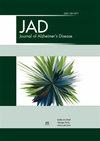Interpersonal synchrony in dance/movement therapy: Neural underpinnings for individuals with dementia.
IF 3.4
3区 医学
Q2 NEUROSCIENCES
引用次数: 0
Abstract
Rising global levels of dementia including Alzheimer's disease call for the treatment of both cognitive and psychosocial deficits of this population. While there is no cure for dementia, the progression can be slowed, and symptoms eased. The positive effects of exercise and dance have been documented as has interpersonal synchrony. Dance/movement therapy uses kinesthetic empathy, attunement, and mirroring to communicate, synchronize, and connect with clients, salient for a population that often struggles with loneliness and isolation. Here I offer a perspective on how dance/movement therapy promotes the social functions and neural underpinning of interpersonal synchrony, possibly providing neuroprotection for this population.
舞蹈/运动疗法中的人际同步:痴呆症患者的神经基础。
包括阿尔茨海默病在内的痴呆症在全球的发病率不断上升,这就要求对这一人群的认知和社会心理缺陷进行治疗。虽然痴呆症无法治愈,但可以延缓病情发展,缓解症状。运动和舞蹈的积极作用以及人际间的同步性已被证实。舞蹈/运动疗法利用动觉共鸣、调适和镜像来与客户沟通、同步和联系,这对于经常在孤独和孤立中挣扎的人群来说非常重要。在此,我将从舞蹈/运动疗法如何促进人际同步的社会功能和神经基础的角度,为这一人群提供可能的神经保护。
本文章由计算机程序翻译,如有差异,请以英文原文为准。
求助全文
约1分钟内获得全文
求助全文
来源期刊

Journal of Alzheimer's Disease
医学-神经科学
CiteScore
6.40
自引率
7.50%
发文量
1327
审稿时长
2 months
期刊介绍:
The Journal of Alzheimer''s Disease (JAD) is an international multidisciplinary journal to facilitate progress in understanding the etiology, pathogenesis, epidemiology, genetics, behavior, treatment and psychology of Alzheimer''s disease. The journal publishes research reports, reviews, short communications, hypotheses, ethics reviews, book reviews, and letters-to-the-editor. The journal is dedicated to providing an open forum for original research that will expedite our fundamental understanding of Alzheimer''s disease.
 求助内容:
求助内容: 应助结果提醒方式:
应助结果提醒方式:


